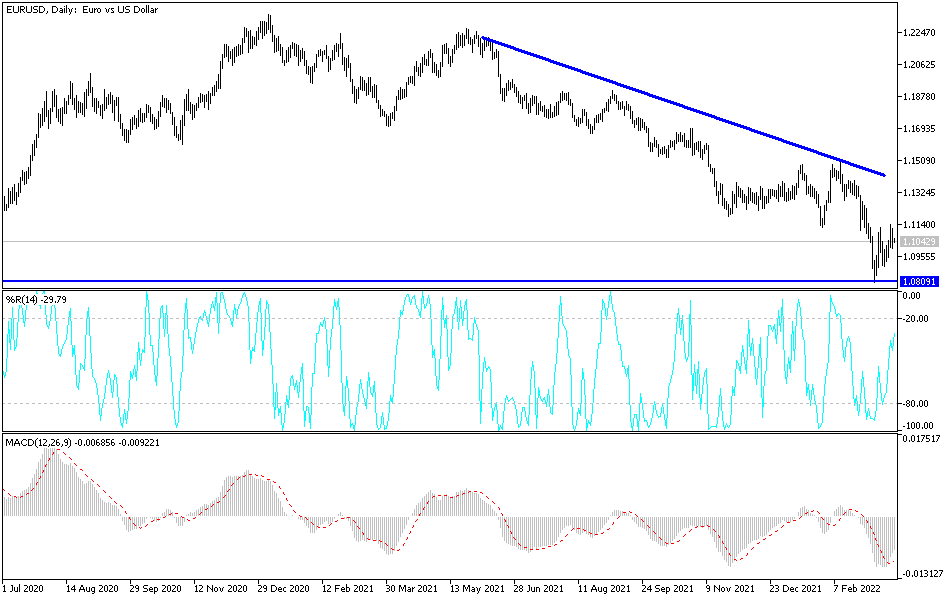Before the end of last week’s trading, the price of EUR/USD succeeded in achieving cautious gains that brought it to the resistance level of 1.1137. With the continued concern about the Russian war, and the euro’s gains, it will remain an opportunity to sell. During the Friday session it fell back to the 1.1003 support level and closed trading stable around the 1.1050 level. The EUR/USD pair's gains came after the Federal Reserve took the first step towards a tight monetary policy, which appears to lead to more profit-taking in many US exchange rates.
In general, the dollar's exchange rates fell almost against the rest of the other major currencies following the widely expected Federal Reserve's decision to start raising interest rates. For his part, US Federal Reserve Chairman Jerome Powell said about the latest report of the Federal Open Market Committee (FOMC): The expectations of policy makers for interest rates. “The way we think about this is that every meeting is a face-to-face meeting, and we will look at the evolving circumstances and if we conclude that it would be appropriate to move more quickly, we will do it,”.
The US interest rate was raised to between 0.25% and 0.5% while the US Federal Reserve indicated that it is likely to match the market expectations for the benchmark index to rise by 2% this year. It also indicated that it is likely to exceed expectations for 2023. Analysts and financial markets are already widely like this result of the bank's latest decision.
Policymakers' forecast group for March suggested US interest rates could rise to between 2.5% and 3.25% in 2023, although Chairman Jerome Powell said the FOMC would be willing to move faster this year. year and the following if inflation does not follow the expected path. "Nevertheless, we expect, especially with the effects of the war but also with the data we've seen so far this year, that we expect inflation to remain high through the middle of the year, start to decline and then decline more sharply next year," Powell added.
Previously, the Fed had expected US inflation to peak sometime in the first quarter of 2022 before starting to decline gradually later in the year. If US inflation eventually prompts a decision to speed up interest rate hikes, the financial market rate will likely flip in favor of a stronger US dollar, which could inevitably be a headwind to the euro-dollar exchange rate.
Meanwhile, there are also potential upside risks for the dollar and eventual downside risks for the EUR/USD resulting from the Fed's plan to initiate the process known as quantitative tightening. Ultimately, quantitative tightening will see the bank start shrinking its $8.9 trillion balance sheet by stopping to reinvest predetermined amounts of government bonds and other assets when they reach their maturity dates.
The process is something that will draw “liquidity” out of the financial system as the Fed shrinks its balance sheet, resulting in a “financial tightening” that is controlled by using pre-set “caps” on the value of balance sheet assets that are excluded each one month of it.
According to the technical analysis of the pair: There is no change in my technical view towards the price of the euro against the dollar EUR/USD. The general trend is still bearish, and the return of stability below the 1.10 level supports the bears to move in prices in the general path. The continued global concern about the length of the Russian war and its consequences will bring the euro dollar an opportunity to collapse to the psychological support level of 1.0800 again. On the upside, and according to the performance on the daily chart, breaking the resistance 1.1290 will be important to break the current descending channel.

